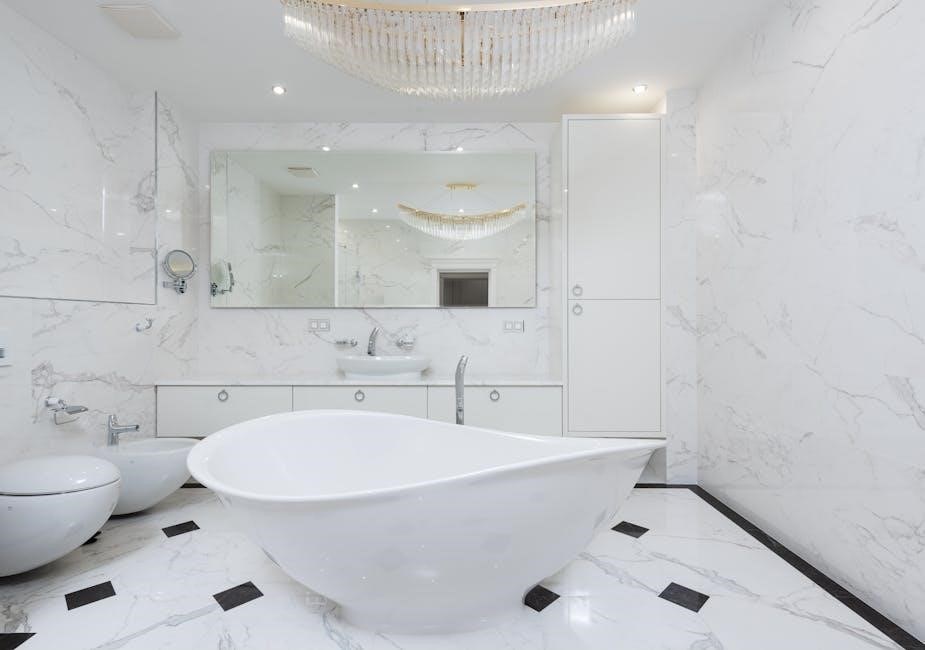The First Suite in E-flat by Gustav Holst is a cornerstone of the concert band repertoire. Premiered in 1920, it represents Holst’s groundbreaking contribution to military band music, blending rich melodies and intricate harmonies that elevated the medium to new artistic heights.

Historical Context of the First Suite
Gustav Holst’s First Suite in E-flat was a pivotal work in the evolution of concert band music. Completed in 1909 and premiered in 1920 at the Royal Military School of Music, it marked a significant shift from the predominant use of transcriptions and popular tunes in military band repertoire. Holst, a renowned British composer and trombonist, sought to create serious, original music for the medium, challenging the notion that military bands were limited to lighter fare. This suite, along with its successor, the Second Suite in F, demonstrated that ensembles combining woodwinds, brass, and percussion could produce complex and artistically meaningful music. The work’s historical importance lies in its role in legitimizing the concert band as a credible medium for classical composition, influencing later composers like Ralph Vaughan Williams and Gordon Jacob. Holst’s innovative orchestration and thematic development set a new standard, making the First Suite in E-flat a cornerstone of band literature and a testament to his visionary approach.

Structure and Movements
The First Suite in E-flat is structured in three movements: Chaconne, Intermezzo, and March. Each movement showcases distinct musical styles, from the lyrical and rhythmic variations of the Chaconne to the lively Intermezzo and the grandeur of the March, all unified by a central thematic idea.
3.1. Chaconne
The Chaconne is the first movement of the First Suite in E-flat and serves as the foundation of the work. It is based on an eight-bar melody introduced by the low brass, which is repeated sixteen times throughout the movement. This theme is reminiscent of English folk music but is entirely original to Holst. The melody’s rhythmic pattern, featuring minim-crotchet and crotchet-minim figures, is inspired by medieval English carols, such as the Agincourt Song from 1415.
Holst employs a wide range of variations to develop the theme, transitioning from lyrical passages to playfully rhythmic and ornamentally embellished sections. The movement includes vivid contrasts, such as “band hits” in the brass and percussion, which outline the theme while the woodwinds perform virtuosic semiquaver runs. A striking low brass excerpt, marked pesante, sharply contrasts with the preceding material, creating a dramatic shift in mood.
The movement also features solo and sectional interplay, including a solo horn, a flute-oboe duet, and a solo alto saxophone. The tenth and eleventh repetitions present an inversion of the theme, creating a somber, funeral march-like atmosphere. A trombone soli in the twelfth repetition highlights Holst’s background as a trombonist. The movement culminates in a powerful coda, marked ff, with the low instruments stating the theme while the upper voices play soaring counterpoint. The final chord, with high concert Bs in the flutes and piccolos, leaves a brilliant and emotionally impactful conclusion.
3.2. Intermezzo
The Intermezzo is the second movement of the First Suite in E-flat and showcases Holst’s mastery of contrasting textures and tonal colors. This movement is predominantly light and playful in character, with a strong emphasis on rhythmic precision and articulation. It features a series of solos and sectional interplay that highlight the unique timbres of the wind band.
The movement begins with a solo oboe introducing a lively theme, which is later taken up by the clarinet and cornet. These solos are accompanied by intricate figurations in the woodwinds, adding a sense of virtuosity and energy. The Intermezzo also includes moments of lyricism, particularly in the euphonium or alto clarinet, which evoke a sense of reflection amidst the movement’s overall brightness.
As the Intermezzo progresses, the second theme emerges in a major key, played by the upper woodwinds with virtuosic semiquaver runs. The movement concludes softly, with the second theme fading to a whisper, creating a delicate balance between contrast and cohesion. This movement exemplifies Holst’s ability to craft music that is both technically challenging and musically engaging, making it a standout section of the suite;
3.3. March

The March is the final movement of the First Suite in E-flat and is renowned for its grandeur and technical complexity. It opens with a striking bass drum solo, a rare feature in band literature, setting a dynamic tone. The movement features two contrasting primary melodies: the first, a bold and marcato theme in the brass, and the second, a lyrical and legato melody in the mid and low woodwinds. These themes are skillfully interwoven, creating a rich and layered sound.
As the march progresses, the woodwinds introduce a theme reminiscent of the earlier movements, while the brass delivers a majestic counterpoint. The climax of the movement is particularly notable, with both melodies layered in a simultaneous recapitulation. This technique, known as “simultaneous recapitulation,” showcases Holst’s mastery of orchestration. The brass section plays the second melody in a grand march style, while the woodwinds execute intricate variations of the first theme.
The march concludes with a powerful and emotional crescendo, marked ffff, featuring a famous trombone soli that has become iconic in the concert band repertoire. This movement is a testament to Holst’s ability to blend contrasting elements into a cohesive and thrilling finale, making it a highlight of the suite.

Composition and Orchestration
Gustav Holst’s First Suite in E-flat showcases his innovative approach to composition and orchestration, tailored specifically for the military band medium. Completed in 1909, the suite was groundbreaking in its scoring, addressing the challenges of non-standardized instrumentation prevalent at the time. Holst crafted the work for 19 essential instruments, with an additional 17 parts labeled “ad lib,” allowing flexibility for ensembles of varying sizes.
The orchestration highlights Holst’s understanding of the band’s tonal capabilities. He strategically balanced woodwinds, brass, and percussion to create a cohesive and vibrant sound. The suite’s scoring was influenced by Holst’s own musical experiences, including his career as a trombonist, which is evident in the prominence of low brass passages, particularly in the Chaconne and March movements.
Holst’s use of “band hits” and contrasting dynamics added color and brilliance to the work. The interplay between solo instruments and sections, such as the flute, oboe, and euphonium, demonstrates his ability to exploit the unique timbres of the band. The orchestration not only accommodated the limitations of early 20th-century military bands but also elevated the medium, proving that serious music could be composed specifically for winds, brass, and percussion.
This innovative approach set a benchmark for future composers, inspiring works like Vaughan Williams’ English Folk Song Suite and Jacob’s William Byrd Suite. Holst’s meticulous orchestration ensured the suite’s adaptability and enduring appeal, making it a cornerstone of the concert band repertoire.

Impact on the Concert Band Repertoire
Gustav Holst’s First Suite in E-flat had a profound and lasting impact on the concert band repertoire, revolutionizing the perception of music written specifically for wind, brass, and percussion ensembles. Prior to its composition, military bands primarily performed transcriptions of orchestral works and popular music, with little emphasis on original, serious compositions. Holst’s suite, along with its successor, the Second Suite in F, demonstrated that the band medium could convey complex harmonies, rich textures, and emotional depth, thereby legitimizing it as a vehicle for serious music.
The suite’s influence extended beyond its immediate success. It inspired prominent composers such as Ralph Vaughan Williams and Gordon Jacob to create their own works for band, including the English Folk Song Suite and the William Byrd Suite, respectively. This marked the beginning of a new era in band literature, as composers began to explore the unique capabilities of the medium.
Today, the First Suite in E-flat remains a cornerstone of the concert band repertoire, celebrated for its innovative orchestration and enduring artistic value. Its impact is evident in the countless performances, arrangements, and adaptations that continue to inspire audiences and musicians worldwide. Holst’s work not only elevated the status of band music but also paved the way for future generations of composers to explore its potential.

Notable Arrangements and Performances
Gustav Holst’s First Suite in E-flat has been widely performed and arranged, showcasing its enduring popularity and versatility. One notable arrangement is by Sydney Herbert, who transcribed the suite for brass band. This version has been used as a contest piece in numerous competitions, including the British regional brass band championships in 1970, 1983, and 2019, further cementing its place in band repertoire.
The original version for military band has been performed by esteemed ensembles worldwide, with recordings by prominent conductors such as Frederick Fennell and others. Its premiere in 1920 at the Royal Military School of Music marked a significant moment in the history of band music. Additionally, arrangements for smaller ensembles, such as Jacob Samuel Brown’s version for a 20-member chamber ensemble, demonstrate the work’s adaptability.
The suite’s manuscript, housed at the British Library, reflects its historical significance. Over the years, its publication by Boosey & Co. in 1921 and subsequent editions have ensured its accessibility to musicians globally. These arrangements and performances highlight the suite’s timeless appeal and its continued influence on concert band and brass band traditions.

Publication and Manuscript Details

The original manuscript of the First Suite in E-flat for Military Band, completed in 1909, is housed at the British Library in London under the shelf listing Add. MS 47824. This manuscript includes the full score for the suite, consisting of three movements: Chaconne, Intermezzo, and March.
The suite was first published by Boosey & Co. in 1921, with parts and a piano reduction made available. The original publication did not include a full instrumental score, a common practice at the time. A later edition was released in 1948, reflecting advancements in instrumentation and addressing the evolving needs of military bands.
The title of the suite was initially Suite in E for Military Band but was later revised to First Suite in E-flat, with the change documented on the manuscript. This alteration occurred during World War I, when Holst also dropped “von” from his name due to anti-German sentiment. The manuscript includes notes about ad lib parts, showcasing Holst’s careful consideration of the variability in band instrumentation during the early 20th century.
Today, the suite remains a cornerstone of the concert band repertoire, with its publication and manuscript details serving as a testament to its historical significance and enduring influence.
Gustav Holst’s First Suite in E-flat stands as a monumental work in the concert band repertoire, marking a pivotal moment in the evolution of music for wind ensembles. Its rich, evocative themes and masterful orchestration have left an indelible imprint on the genre, inspiring countless composers and performers alike.
Completed in 1909 and premiered in 1920, the suite not only elevated the status of military band music but also demonstrated the medium’s potential for serious artistic expression. Its enduring popularity lies in its ability to balance intricate craftsmanship with emotional resonance, making it a timeless favorite for audiences and musicians.
The First Suite in E-flat remains a cornerstone of concert band literature, celebrated for its historical significance and enduring artistry. Its influence continues to resonate, ensuring its place as a foundational work in the repertoire for generations to come.



